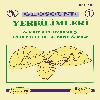Attepe (Mansurlu-Feke-Adana) demir yatağı ile yakın çevresindeki cevher oluşum tipleri ve bazı jeokimyasal özellikleri
Çalışma alanında, Geyikdağı Birliğine ait İnfrakambriyen, Alt Paleozoyik ve Mesozoyik yaşlı metatortul birimler ile Bozkır Birliğine ait Üst Kretase yaşlı ofiyolitik kayaçlar ve bunları açılı bir uyumsuzlukla örten Miyosen yaşlı çökeller yüzeylemektedir.Yörede, jenetik yönden birbirleriyle ilişkili fakat yataklanma şekli ve zamanı birbirinden farklı olan üç ayrı cevher tipi belirlenmiştir. Bunlar, sedimanter pirit ve hematit oluşukları, hidrotermal siderit ve hematit oluşumları ile karstik demir cevherleridir. Laminalı, bantlı ve tabakalı sedimanter yapılara sahip olan I. Tip cevherler (piritler ve hematitler) sırasıyla İnfrakambriyen yaşlı bitümlü şeyl-fillit ve metakuvarsitler içerisinde çökelmişlerdir. II.Tip cevherler, Miyosen'den daha yaşlı tüm birimler; özellikle de Alt-Orta Kambriyen yaşlı metakarbonatlar içerisinde yer alırlar. Paleosen-Alt Eosen zaman sürecinde oluşan bu cevherler tektonik kontrollü damar, mercek ve düzensiz sınırlı kütlelerden oluşurlar. Pirit, tetraedrit, kalkopirit ve markazit gibi sülfürlü mineralleri içeren sözkonusu cevherler, hidrotermal prosesler sonucunda muhtemelen İnfrakambriyen yaşlı sedimanter pirit ve hematit oluşuklarından türemişlerdir. Hidrotermal cevherlerin çok evreli endokarstik süreçlerle ayrışması sonucunda da başlıca limonit, götit ve ikincil hematitlerden oluşan III. Tip karstik demir cevherleri ortaya çıkmıştır.Hidrotermal siderit cevherleri % 51.45 FeO, % 7.52 CaO, % 5.30 SiO2, % 0.99 K2O; karstik cevherler % 58.17 Fe2O3, % 3.85 SiO2, % 0.69 Al2O3, % 0,81 CaO, % 0.25 MgO ve % 0.09 K20 içerirler. Karstik cevherler sideritlere göre Fe bakımından zenginleşirken CaO, SiO2 ve K2O bakımından fakirleşmişlerdir. Siderit damarlarındaki hidrotermal piritlerin Ni konsantrasyonları, sedimanter piritlere göre daha düşük; Cu, Se, Hg ve Sb içerikleri ise yüksektir. Siderit cevherlerinin Cr, Co, Ni ve Cu içeriklerinin çok düşük oluşu, II. Tip cevherlerin bazik mağmatik bir kökenle ilişkili olamayacağına işaret etmektedir.
Types of mineralization in the Attepe (Mansurlu-Feke-Adana) iron deposit and its surrounding area and their some geochemical features
In the study area, Infracambrian, Lower Paleozoic and Mesozoic aged metasedimentary rocks of the Geyikdağı Unit; Upper Cretaceous aged ophiolitic rocks of the Bozkır Unit and Miocene aged sediments which overlies the older units with an angular unconformity.In this region, three types of mineralizations all being related genetically but differring in depositional forms and time were determined. These are sedimentary piyrite and hematite occurrences, hydrothermal siderite and hematite formations and karstic iron ores. Type I ores (pyrites and hematites) having sedimentary structures such as lamination, banding and layering were precipitated in the Infracambrian aged bituminous shale-phyllite and metaquartzites through sedimentary processes respectively.Type II ores bearing sulphide minerals such as pyrite, tetrahedrite, chalcopyrite and marcasite, can be fond in all units older than Miocene aged units. These ores in the form of tectonically controlled veins, lenses and irregularly shaped masses occur particularly within Lower-Middle Cambrian metacarbonates. Mentioned ores formed during the Paleocene-Lower Eocene period, have probably been derived from Infracambrian sedimentary pyrite and hematite formations as a result of the hydrothermal processes. Type III ores consisting of limonite, goethite and secondary hematites may have been derived from the hydrothermal ores by polyphase endokarstic processes. Hydrothermal siderite ores contain 51.45 % FeO, 7.52 % CaO, 5.30 % SiO2, 0.99 % K2O; karstic ores contain 58.17 % Fe2O3, 3.85 % SiO2, 0.69 % Al2O3, 0.81 % CaO, 0.25 % MgO and 0.093 % K20. The karstic ores are richer in Fe, and poorer in CaO, SİO2 and K20 than the siderites. Sedimentary pyrites exhibit some distinctive geochemical features compared with the hydrothermal pyrites. Ni contents of the hydrothermal pyrites in the siderite veins are lower; Cu, Se, Hg and Sb contents are higher than those sedimentary pyrites. Having very low content of Cr, Co, Ni and Cu points that siderite ores were not related to a basic magmatic source.
___
- ISSN: 1019-1003
- Yayın Aralığı: Yılda 2 Sayı
- Başlangıç: 1986
- Yayıncı: Çukurova Üniversitesi Jeoloji Mühendisliği Bölümü
Sayıdaki Diğer Makaleler
Sayısal yüzey modelleme (DTM) tekniği ile kömür damarlarının kalite dağılımlarının belirlenmesi
Cengiz KIRMANLI, Hasan ERGİN, Taner ERDOĞAN
Ulukışla (Niğde) volkaniklerinin mineralojik özellikleri
Halil BAŞ, Nejdet POYRAZ, Kerim KOÇAK
Boztepe (Malatya) baraj yerindeki temel kayanın geçirimliliği
Zülfü GÜROCAK, Bahattin ÇETİNDAĞ
Mekanik kazıda son yıllarda yaşanan gelişmeler, sorunlar ve gelecek ile ilgili beklentiler
Denizel biyofasiyeste bakırın dağılımı ve konsantrasyonu
İbrahim ÇOPUROĞLU, Rasim AĞADAYI
Konya-Sille bölgesi killerinin pişme özellikleri
Mechanisms of gangue transfer into flotation concentrates and their effects of flotation performance
Emin Cafer ÇİLEK, Nuran ÖZVEZİR
